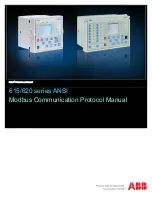
Page 67
Figure 6.3 Chain sequence
If CYCLE MODE [
"#
] is used in the last schedule of a chained sequence, the entire chain
will be repeated if the initiation is held closed.
Select the first Schedule of a CHAINED sequence in the example below can be any of the
50 possible. In CYCLE MODE [
"$
] a scheduled sequence is CHAINED immediately to
the next schedule (numerically 23 . . 24 . . 25, etc.). When initiated (Foot Switch), the
following sequence takes place, as shown on the Figure 6.3.
NOTE:
The first Schedule of the CHAINED sequence is called "N".
While SCHEDULE "N" is sequencing, the times and parameters will be in accordance with
those stored in SCHEDULE "N". When “N” has finished, the sequence jumps to
SCHEDULE "N+1". SCHEDULE "N+1" is then performed and so on until the sequence
encounters a [
""
],[
"#
], or [
"%
] in the CYCLE MODE FUNCTION. The various Cycle modes
will cause the sequence to continue in the following manner.
Within the CHAINED sequence the control will encounter SCHEDULES programmed with
the following CYCLE modes and will react as follows :
[
""
] NON REPEAT
: The sequence will end in NON REPEAT mode. The SCHEDULE
Display will then return to the first initiated sequence.
[
"#
] REPEAT
:
The sequence will start over at the initiated sequence and continue as
explained in CHAINED Mode.
StockCheck.com
Summary of Contents for EN1000 series
Page 2: ...S t o c k C h e c k c o m ...
Page 19: ...Page 17 Figure 3 6 External SCR Contactor connection S t o c k C h e c k c o m ...
Page 120: ...Page 118 11 3 TROUBLESHOOTING GUIDE S t o c k C h e c k c o m ...
Page 121: ...Page 119 S t o c k C h e c k c o m ...
Page 122: ...Page 120 11 4 BLOCK DIAGRAM S t o c k C h e c k c o m ...
















































